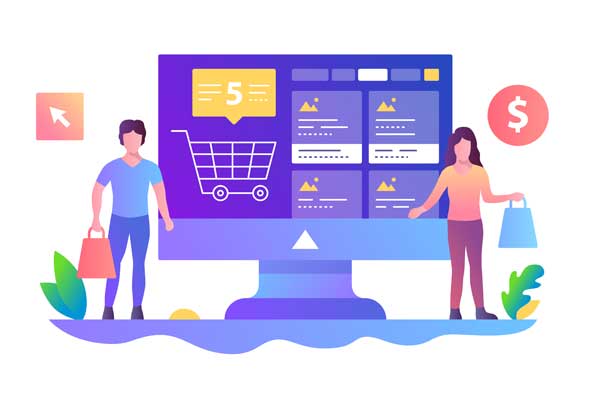The Primary Way for Marketers to Stop Cart Abandonment Include:
- Implementing strategies like free shipping, simplifying the checkout process, and building trust through user reviews and trust badges.
- Retargeting users who have abandoned their carts with personalized emails or ads with discounts or gifts.
- Setting up a referral program to build brand following.
As an online business owner, it can be frustrating to see potential customers abandon their shopping carts before completing a purchase. This phenomenon, known as cart abandonment, is a common problem for e-commerce businesses. However, understanding the reasons behind it and implementing effective solutions can significantly reduce cart abandonment rates and increase sales. In this blog, we’ll explore the main causes of cart abandonment and provide practical tips on how to fix them.
Unexpected Costs
One of the most common reasons for cart abandonment is unexpected costs, such as shipping fees, taxes, or handling charges. Customers may feel misled if they reach the checkout page and discover additional costs they were not aware of when they added items to their cart.

Call Intersect to start capturing essential customer data – you could be undercharging or overcharging!
Breaking down the action you should take:
- Be transparent about all costs upfront: Make sure that you are transparent about all costs upfront, including shipping fees, taxes, and any other charges. Displaying the total price early in the checkout process can help reduce the chances of customers abandoning their cart over unexpected costs.
- Offer free shipping: Offering free shipping is a great way to eliminate cart abandonment due to unexpected shipping costs. You can offer free shipping for orders over a certain amount or for specific products, which you should be able to set up in the back-end of your site’s ecommerce software.
- Provide clear and detailed product information: Make sure that your product information is clear and detailed, including product dimensions, weight, and any other relevant information. This can help customers avoid unexpected costs due to incorrect orders or returns.
- Provide multiple payment options: Providing multiple payment options can help customers choose the payment method that works best for them, reducing the chances of cart abandonment over unexpected fees or payment options they are not comfortable with. It may also be advisable to offer options like PayPal and pay-in-four options like Klarna and Afterpay.
- Use remarketing campaigns: Use remarketing campaigns to target customers who abandoned their cart due to unexpected costs. Offer them incentives such as discounts or free shipping to encourage them to complete their purchase.
Complicated Checkout Processes
If your checkout process is too complicated, it can discourage customers from completing their purchase. Customers may abandon their cart if they are forced to create an account, fill out too many forms, or navigate through too many pages. Simplify the process by allowing guest checkouts, auto-filling information, and minimizing the number of steps required to complete the purchase. Provide clear instructions and a progress bar so that customers can see how far they are from completing their purchase.
Breaking down the action you should take:
- Implement a guest checkout option: Not everyone wants to create an account or log in to your website just to make a purchase. Offering a guest checkout option can save time and reduce friction for those who are only making a one-time purchase.
- Optimize the form fields: Keep the number of form fields to a minimum and only ask for essential information. Use autocomplete or autofill features to make filling out forms easier and faster.
- Use progress indicators: Displaying progress indicators or a progress bar during the checkout process can help customers understand how far along they are in the process and how much more time is required.
- Simplify payment options: Offer a range of payment options, including credit cards, PayPal, and Apple Pay, but limit the number of options to avoid overwhelming customers while also covering the bases.
- Streamline the delivery options: Make the delivery options clear and concise and ensure that the customer can easily understand the cost and expected delivery time.
- Provide support and assistance: Offering support and assistance throughout the checkout process can help customers feel confident and comfortable. Use chatbots, live chat, or a support hotline to help when needed.
Technical Issues
Technical issues such as slow loading times, website crashes, or broken links can be frustrating for customers and cause them to abandon their cart. Ensure that your website is mobile-friendly, has a fast loading time, and is optimized for all browsers. Test your website regularly to identify and fix any technical issues.
Breaking down the action you should take:
- Regularly test your website: Perform regular website testing to identify and fix any technical issues before they impact your customers. This can include browser compatibility testing, load testing, and security testing.
- Optimize your website speed: Slow loading pages can lead to frustration and abandonment. Optimize your website speed by compressing images, minifying code, and optimizing your server configurations.
- Use a reliable web hosting service: A reliable web hosting service is critical to ensuring that your website is always available and functioning properly. Consider using a reputable hosting service that offers 24/7 customer support.
- Implement a content delivery network (CDN): A CDN can improve website speed and reduce downtime by distributing your website content across multiple servers.
- Keep your website up-to-date: Regularly update your website software, including your e-commerce platform, plugins, and themes, to ensure that they are free of bugs and vulnerabilities.
- Provide customer support: Offer customer support channels, such as a help center, FAQs, and live chat, to help customers troubleshoot any issues they encounter while using your website.
Lack of Trust
Customers need to trust your website before making a purchase. If your website looks unprofessional, doesn’t have a secure checkout process, or lacks social proof, customers may feel uneasy about buying from you. To build trust, include customer reviews, certifications, security badges, and contact information. Make sure your website is secure by using HTTPS and SSL encryption.


Breaking down the action you should take:
- Display clear and detailed product information: Providing accurate and detailed product descriptions, high-quality images, and customer reviews can help build trust with potential buyers.
- Provide secure payment options: Offer secure payment options, such as credit card payments with SSL encryption or trusted third-party payment providers like PayPal.
- Display trust badges and certifications: Display trust badges, such as SSL or PCI compliance, and other certifications or awards that your business has received to increase trust with customers.
- Use high-quality website design: A clean and professional website design can help create a positive first impression and increase trust in your brand.
- Offer a clear and fair return policy: A clear and fair return policy can help reassure customers that they can shop with confidence and return items if necessary.
- Showcase social proof: Social proof, such as customer reviews, ratings, or testimonials, can help increase trust by showing that others have had positive experiences with your brand.
Distractions
Distractions such as pop-ups, ads, or social media links can divert customers’ attention away from the checkout process, leading to cart abandonment. Minimize distractions by removing unnecessary pop-ups, ads, and links from the checkout page. Instead, use targeted cross-selling or upselling techniques to encourage customers to add more items to their cart.
KPIs to Track
- Abandonment rate: This is the most obvious KPI to look at when analyzing cart abandonment. Abandonment rate is the percentage of customers who add items to their cart but do not complete the purchase.
- Conversion rate: Conversion rate is the percentage of visitors who complete a purchase after adding items to their cart. By comparing the abandonment rate with the conversion rate, you can get a clearer picture of how many potential customers you are losing.
- Average order value: Average order value (AOV) is the average amount of money a customer spends per order. By looking at the AOV of abandoned carts, you can identify trends and patterns in customer behavior.
- Time to checkout: Time to checkout is the amount of time it takes for a customer to complete the checkout process. A long checkout process can be a major factor in cart abandonment.
- Exit page: The exit page is the last page a customer sees before leaving your website. By identifying the exit page for abandoned carts, you can get insights into what might be causing customers to leave without completing their purchase.
- Customer feedback: Gathering feedback from customers who have abandoned their carts can provide valuable insights into why they did not complete their purchase. Use surveys, interviews, or other feedback tools to gather this information.
Unsure of what your KPIs should be?
We can help determine what your organization should be tracking to excel.
Think About Retargeting
A marketing pixel is a small piece of code that is embedded on a website or landing page, and it allows marketers to track user behavior, analyze user data and optimize their campaigns. In the case of cart abandonment, a marketing pixel can be used to help prevent it by enabling retargeting campaigns. A pixel is what Intersect provides to embed into your site to see what is happening on your site and picking up the little cookie crumb trails that users leave behind. Part of these cookie crumbs can be put together in order to create what’s known as a “retargeting campaign.”
Retargeting campaigns involve showing ads to users who have previously visited your website or abandoned their cart, with the aim of encouraging them to complete their purchase. When a user adds an item to their cart but fails to complete the purchase, the marketing pixel can track this behavior and trigger a retargeting campaign that shows the user personalized ads related to the abandoned items or offers an incentive to complete the purchase.
Through retargeting campaigns, a marketing pixel can help remind users of the items they were interested in and encourage them to return to the website to complete their purchase. It is important to note, however, that while a marketing pixel can be a useful tool in preventing cart abandonment, there are many other factors that can contribute to cart abandonment such as poor website design, lack of trust in the site, shipping costs, and more. Therefore, a comprehensive approach that takes into account all possible factors should be used to tackle cart abandonment effectively.
Abandoned Carts Don’t Have to be Lost Carts
Cart abandonment is a common problem for e-commerce businesses, but it’s not an insurmountable one. By understanding the reasons behind it and implementing effective solutions (working with Intersect Technologies, for example), you can reduce cart abandonment rates and increase sales. Remember to be transparent about costs, simplify the checkout process, address technical issues, build trust, and minimize distractions. By doing so, you can create a positive shopping experience that encourages customers to complete their purchase.




